Fairy Tales & Fables Part 1: Little Red Riding Hood, The Three Billy Goats Gruff, & The Three Little Pigs
There are so many reasons for parents to read fairy tales and fables to young
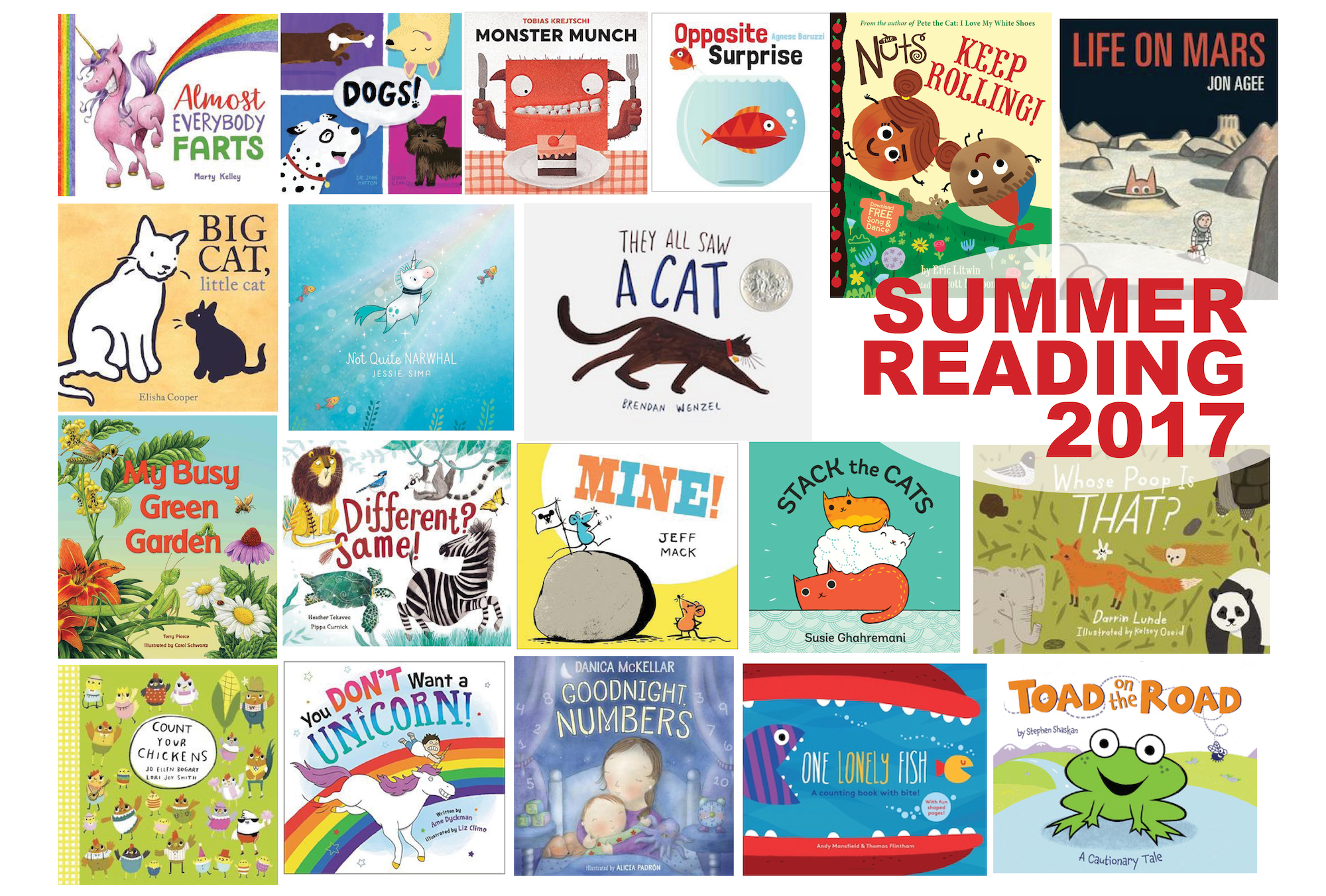
Summer reading isn't just for typically developing kids; it's a precious opportunity to create a lifetime association between reading and leisure. So far, 2017 has been a great year for picture books that work for children on the autism spectrum.
Stroll into the New Release section of your local bookstore with confidence! Here are 10 of the year-so-far's standout picture books and board books. Look out for part two of this blog post next week. I'll be featuring 10 more 2017 favorites.
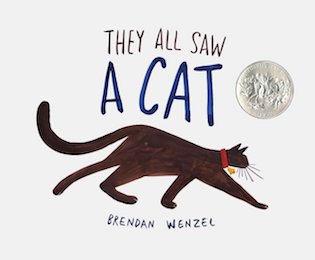
Chronicle Books (2016); hardcover, $16.99

This was technically a late 2016 release, but it's so good I had to include it.
They All Saw A Cat is tailor-made for modeling empathy. As we turn the pages, a cat encounters a dozen creatures, all of whom see the cat differently. To the child, the cat is a pet. To the dog, it's a pest. And to the fox, it's a meal. And so on.
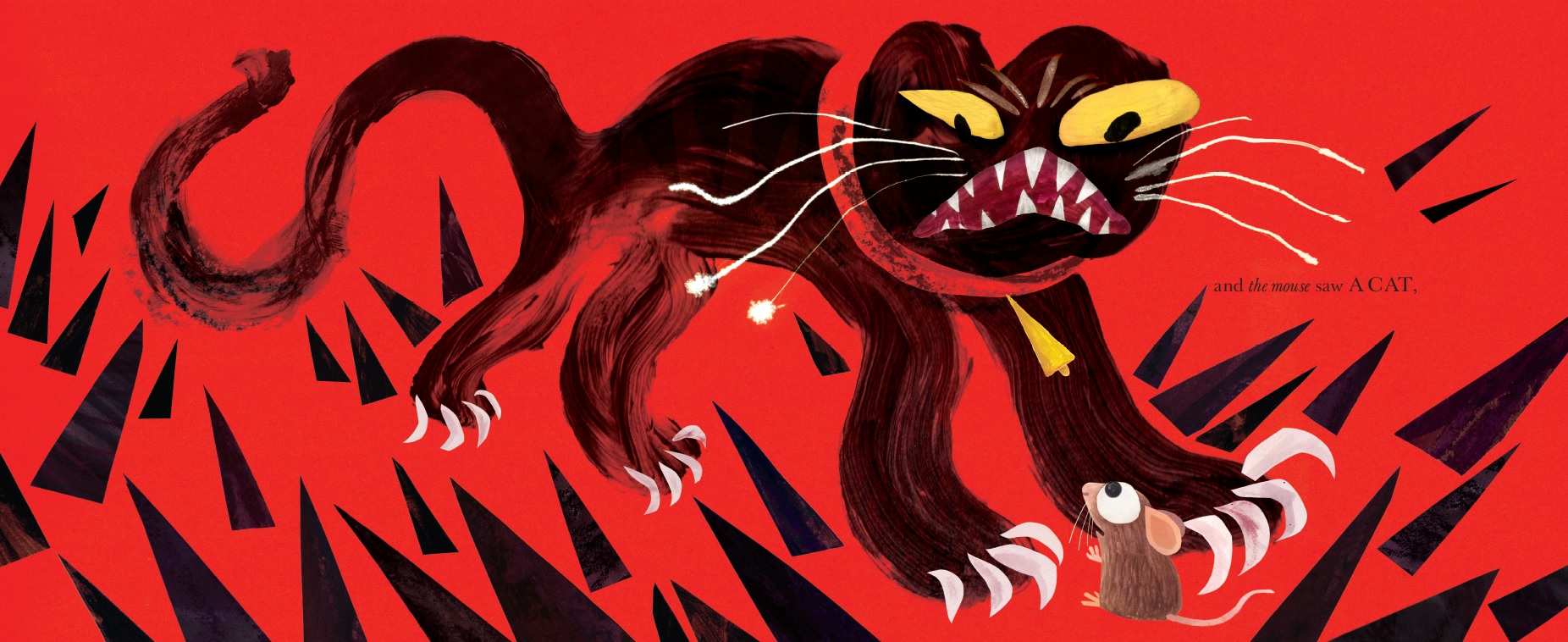
The art is magnificent and masterfully brings the reader into each animal's point of view. My son Harry is enthralled by every page. The writing is spot-on too. Wenzel has a perfect grasp of how to use repetition to allow a child to predict and stay rooted in text. His subtle formatting choices, splicing the repeating sentences into components visually, are perfect for children who are pre-readers or early readers. The book doesn't rhyme, but it doesn't need to. This is one of those brilliant prose poems you feel.
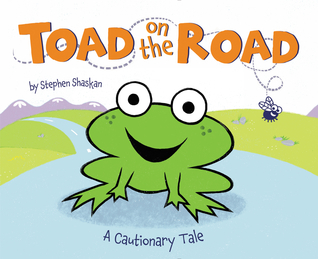
HarperCollins (2017); hardcover, $17.99

This cute and catchy story combines three great elements: vehicles, physical comedy, and a repeating storyline. And wow, is my son Luke ever obsessed with it.
A little toad plays on the road, but Oh no! Oh no!, we can see the silhouette of a vehicle approaching. Who's that coming down the road? The text asks and the child tries to guess the vehicle based on the shape of the silhouette. An additional phonemic clue (i.e. Oh, yikes! Oh, yikes! It's a...) will encourage some kids to guess the vehicle as you turn the page to where it's revealed (Bear on a bike!). The vehicle swerves to avoid harming the toad (SKID! SCREECH! BANG!) and is trashed, but everyone is fine. After a few cycles of this, the last vehicle to arrive is a truck driven by the toad's mother, who finally yanks the little toad off the road.
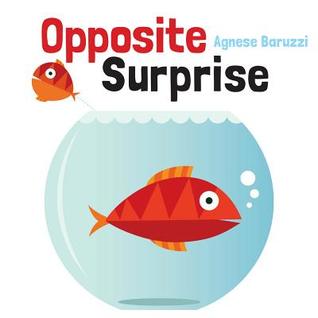
Minedition (2017); board book, $12.99

Small or big? One or many? Empty or full? This simple board book ingeniously uses sturdy and thick fold-out flaps to expand simple pictures and reveal a larger image so that two opposite attributes are shown. A small blue truck unfolds to reveal a big construction vehicle. One sheep is actually part of a herd of many. An empty glass box expands to reveal a tank full of goldfish.
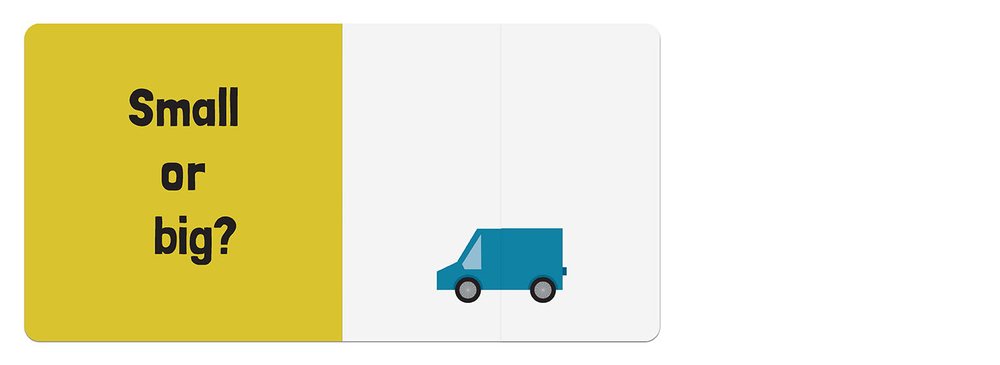

Children will enjoy the tactile nature of interacting with Opposite Surprise. It's a fabulous book for practice labeling basic attributes and for generalizing them.
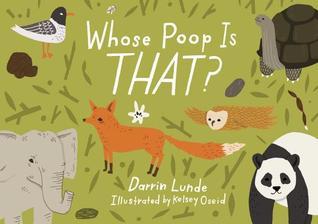
Charlesbridge Publishing (2017); hardcover, $16.99

I love poop books. It's so important, especially when a child is potty training, to surround them with the right language. Whose Poop Is That? explores the droppings of seven different animals: a red fox, an African elephant, a panda, an owl (an owl pellet!), a Galápagos tortoise, a seagull, and the extinct ground sloth (fossil poop!).
"Whose poop is that*?"* the first page asks. Animal tracks provide a hint. A closeup of the poop on the facing page and text describes the poop, i.e. for the red fox: "It has bits of bone and a tuft of fur in it." The can-you-guess narrative format gives kids a second to shout out their ideas before you turn the page. The animal is then revealed and we are fed compelling and descriptive facts about its eating and digestive habits.
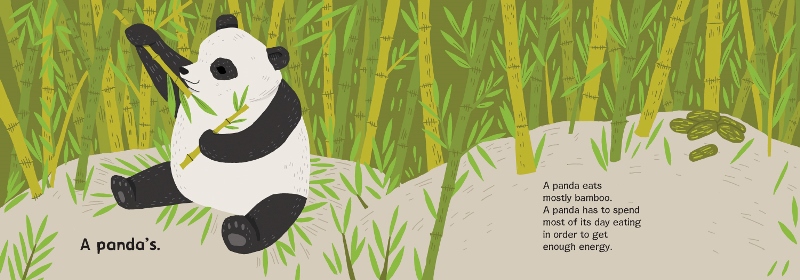
A solid, repeating framework gives kids the confidence to participate (and kids who love labeling animals like my son Harry will be reinforced by guessing the animal). The repetition of the w-question ("Whose...?") is great practice with questions about ownership. Animal poop is inherently fascinating (and gross) and that makes this a great pick for kids who struggle with attention.
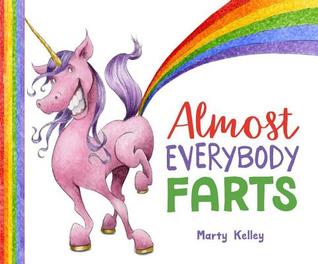
Sterling Children's Books (2017); hardcover, $12.95

Did I mention that I love fart books too?
Almost Everybody Farts is rhyming, rhythmic silliness at its best. We learn synonyms and euphemisms for farting (toot, SBD, passing gas, etc.), mythical creatures (rainbow-farting unicorns, fire-farting dragons!) get into the mix, and we also hear about the one person who insists she doesn't fart: mother.
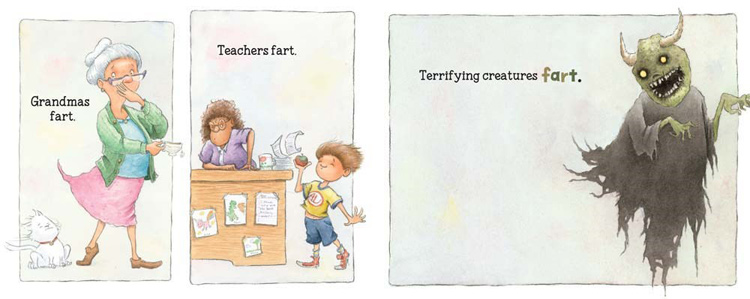
The paneled illustrations are amazingly active considering the subject matter is invisible gas. Legs raise, skirts blow, papers rustle, bubbles form, and positional victims clench their faces in disgust. The characters depicted are also diverse, which is nice to see. The running gag of mom insisting she doesn't fart is executed with perfect wit. The poem keeps arriving at the subject (i.e. "I think I heard your mother...") and suddenly Mom is back, breaking the fourth wall and and shaking her finger at the reader insisting "Mothers do not fart!"
Both my kids get a kick out of this book. If you aren't afraid of making a variety of impressive fart sounds, you are almost guaranteed to get an attentive audience too.

blue manatee press (2017); board book, $7.99

In Dogs! colorfully painted panel illustrations of dogs and spare, prompting text foster an interactive experience. Blanks require fill-in skills (When dogs talk, they say ____!). Questions prompt discussions (i.e. What do dogs like to do?) and the art provides some suggestions and tacting opportunities to answer those questions (i.e. pictures of dogs sleeping, playing ball, on a walk, scratching, swimming, and eating). There is also modest wordplay, basic attributes, and simple story sequencing opportunities.
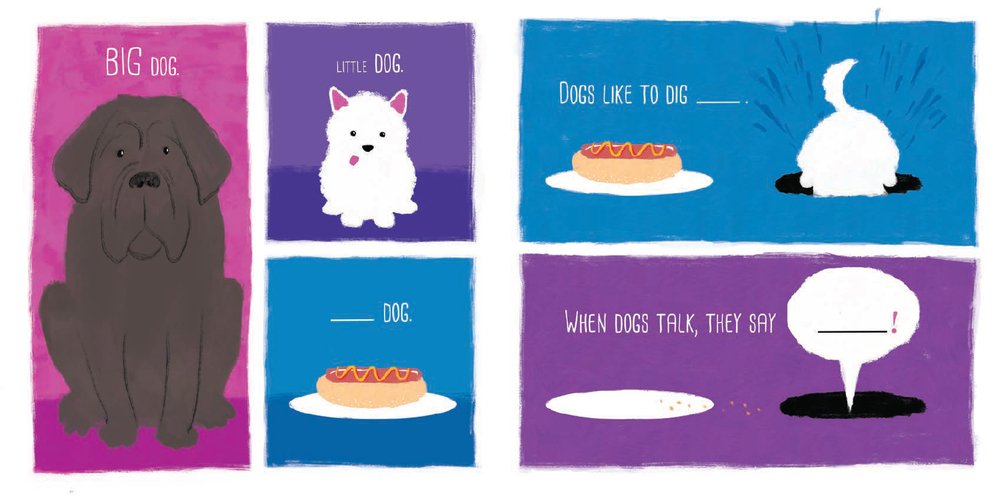
While Dogs! is a board book targeted at toddlers, it will also work for many older children on the spectrum with pragmatic language delays. It's also a useful book for parents and teachers to gain practice with evidence-based read aloud techniques. The author, Dr. John Hutton, is a researcher at Cincinnati Children's Hospital's Reading & Literacy Discovery Center, and he is a proponent of dialogic reading, a technique that encourages adults to interact with children as they read. And if you're more of a cat person, the next book, Cats! releases in September 2017.
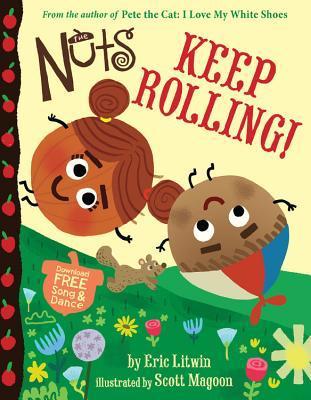
Little, Brown Books for Young Readers (2017); hardcover, $17.99

Hazel and Wally are nuts who are sick of being small. So they roll down a muddy hill, getting bigger and muddier as they go. Simple words to describe size (big, small, tall, etc.) are introduced and repeated. There's an easy refrain to sing: "Keep rolling. Keep rolling. Keep rolling."
As our nutty heroes get bigger, their size is compared to the sizes of cats, dogs, and elephants. The suggestive placement of branches and leaves and twigs cause a dog to chase them thinking they are "cats," a dog-catcher then mistakes them for "dogs," and finally a zoo-keeper comes after them as "elephants."
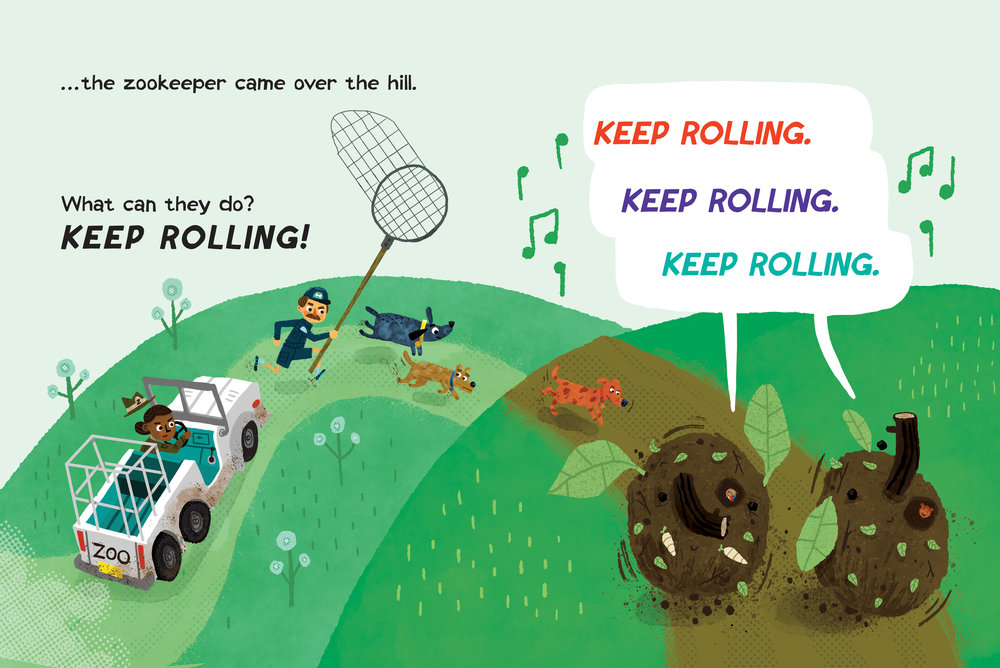
Litwin is a master storyteller, and he hits nearly every item on my wishlist: repetition, rhyme, appropriate academic elements (size attributes/comparisons), humor, and a multi-sensory approach (singing, rolling). I interviewed Eric Litwin last December and he told me that this book marked a return to the positivity message he established with Pete the Cat, calling that his "favorite subgenre."
For whatever reason (I think because they are nuts), Wally and Hazel are not as beloved as Pete the Cat and Groovy Joe are with my kids, so this book isn't requested as often. But overall The Nuts: Keep Rolling! is yet another great offering for Litwin fans.
(Disclosure: I received a free copy of this book for review purposes from the publisher.)
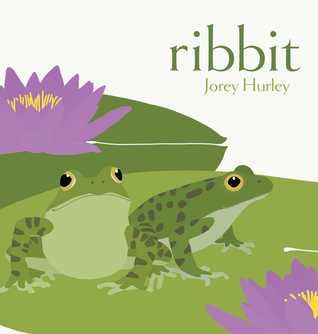
Simon & Schuster/Paula Wiseman Books (2017); hardcover, $16.99

My son Harry became increasingly fascinated by animal lifecycles this year. When I saw Ribbit at the library I knew he had to have it.
Each spread of this beautifully illustrated book shows a moment in the lifecycle of a frog paired with a single word. Harry loves pointing to each word, reading it, and then talking about what's happening on each page. I love mostly wordless picture books for kids like Harry who struggle with scripting because they come out differently each time.
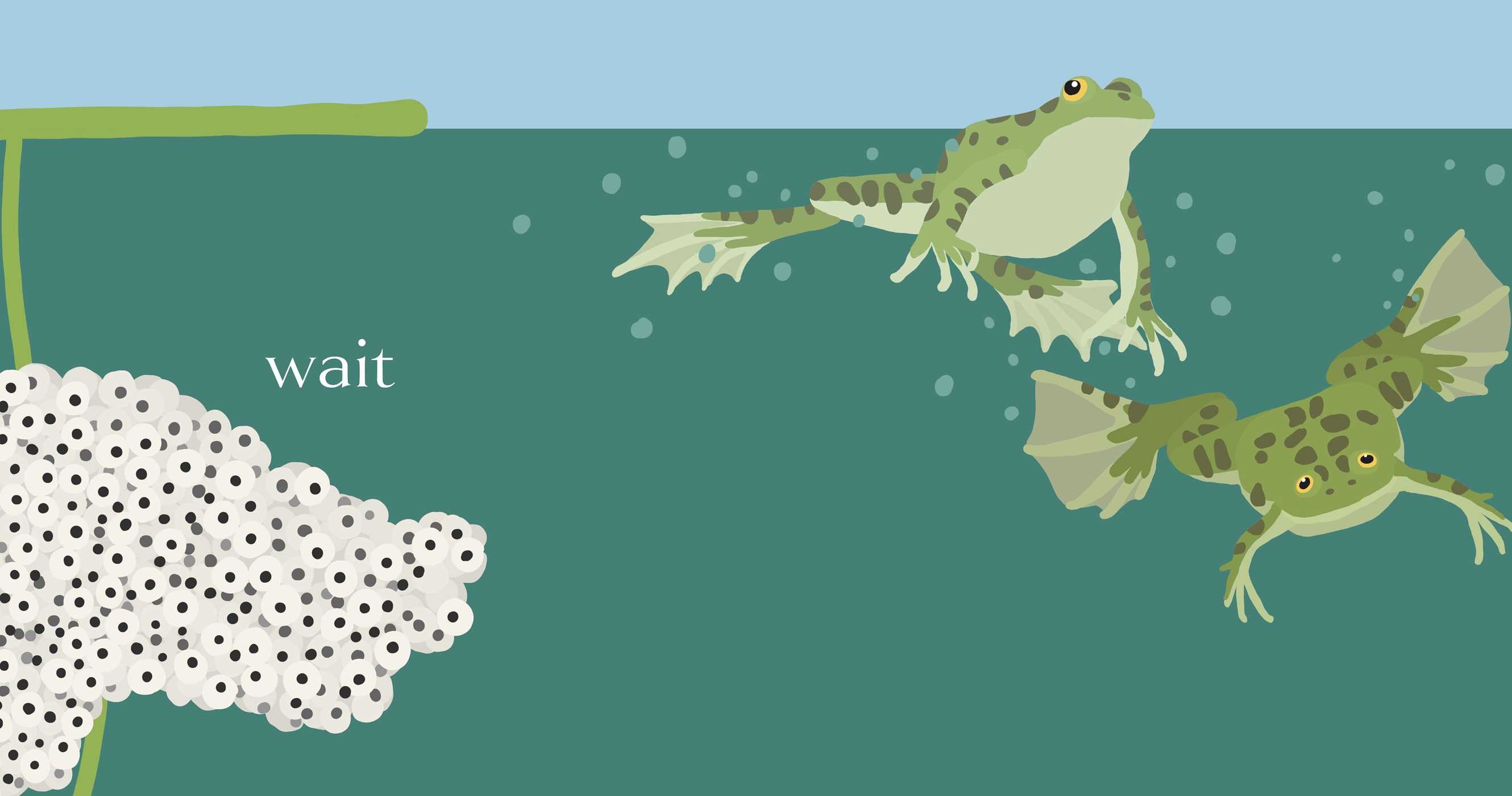
Ribbit begins with a clutch of floating eggs ("wait"). The next page shows a tadpole being born ("hatch"). The word choices continue to aptly describe the sequence of events.
I understand why the Kirkus review complains that the book has the frog greet a second frog with "ribbit" rather than choosing a word to describe mating or reproduction. This euphemistic side-step is silly. However, Harry loves this moment because he gets to make an animal sound. We talk about this page as the frog saying hi to the other frog before they make eggs. I'm more in disagreement with, personally, Hurley's use of "change" instead of "metamorphosis." She uses "hibernate" instead of a simpler word like "sleep," so I don't understand her logic. I don't normally endorse the use of big vocabulary words in picture books, but these particular biology terms come up again and again in preschooler environments and there is only one word to focus on at a time.
While this book is perfect for a kid like Harry, the action is remarkably subtle and the interest highly subject-driven. It's not at all interesting for a kid who isn't already invested in the topic. My son Luke won't even look at it.
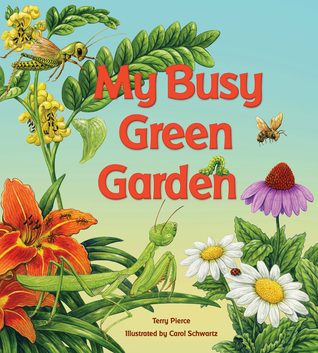
Tilbury House Publishers (2017); hardcover, $16.95

Both of my kids script to some degree, have powerful memories, and are soothed by repetition, rhyme, and a steady beat. So it's no shock to me that the cumulative story (sometimes called a chain story) is one of the most successful narrative formats for them and for many kids with autism. We love "The Twelve Days of Christmas" song, There Was An Old Lady Who Swallowed a Fly, and Green Eggs and Ham. My Busy Green Garden is the latest instant classic in this popular genre.
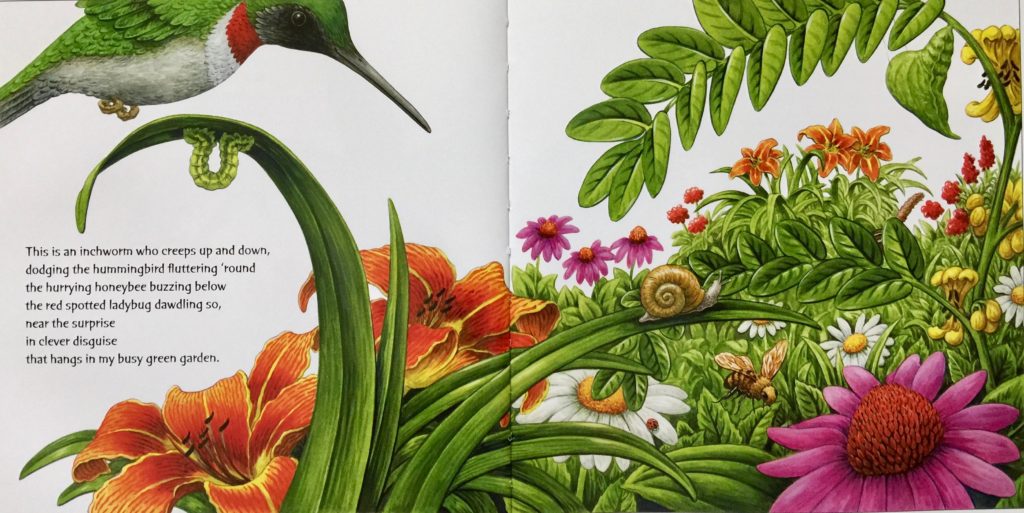
The chain begins with "There's a surprise / in clever disguise / that hangs in my busy green garden." The surprise, when you look closely, is a chrysalis, which of course bursts open in the final stanza, ending the book with a butterfly's flight. As the book progresses, additional insects and birds are added to the chained verse, all interacting with each other.
My son Harry sits with this book patiently for up to 30 minutes, reading it over and over again, busily searching for each named animal in each spread. He visually stims (visual hyposensitivity), so I love that this book gives him a sensory opportunity to appropriately scan and move his eyes around with the page against his nose. But for a kid like my son Luke, who is hypersensitive to visual noise, the book is painfully off-putting. The illustrations are very busy with color, shading, and extraneous (non-named) animals. The perspective also keeps changing to center the newly named animal in each new stanza, and the animals are moving in-scene (as animals do), so it's frustrating to keep track of where everything is if you are averse to visual chaos.
Harry loves animals and bugs in particular, and he is really into animal lifecycles. My Busy Green Garden is a hands-down new favorite that he requests almost daily. Really think about your child sensory issues and interests with this one; your mileage will definitely vary!
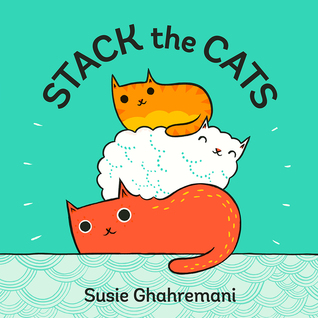
Abrams Appleseed (2017); hardcover, $14.95

Very pretty cartoonish cats, drawn in a variety of colors, pop against teal and orange backgrounds. A gentle rhythm propels the text: "One cat sleeps. // Two cats play. // Three cats? STACK!"
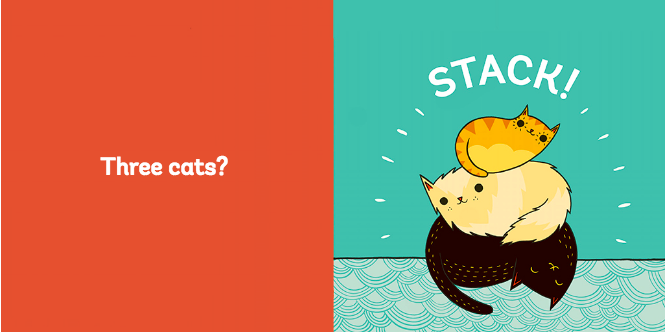
Most counting books that deal in numbers one through ten take on rote counting, numeral ID, basic addition and subtraction, and number sight words. Ghahremani has done something unusual by stacking the cats. She invites children to think about cats in groups of three: "Six cats prefer / Two stacks of three cats." and "Nine cats agree to / Three, three, and three."
My kids find the idea of stacking the cats really funny, so this book has their attention. I've seen my son Harry interact with books that try to introduce multiplication before and he usually insists on rote counting and refuses to accept the groupings. But he is so reinforced by the funny stacked cats, that he counts the stacks of three as intended. It's a tiny thing, but it really goes to show how a thoughtfully crafted book can make a big difference in communicating ideas. But my son Luke isn't ready to make this conceptual leap yet, so for him the cat-stacking is entertaining, but its relationship to counting is puzzling.